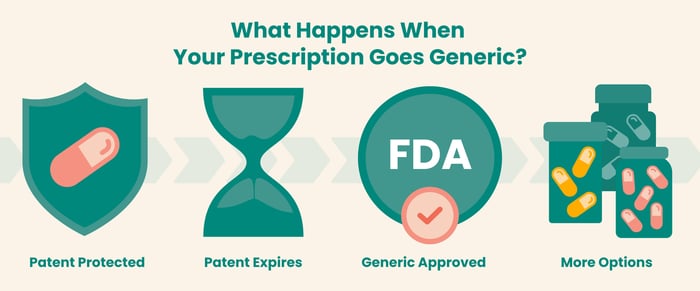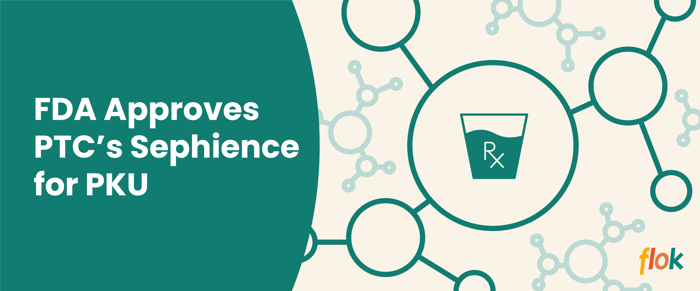Many members of our rare metabolic community rely on specialty prescription drugs—often brand-name medications. Brand-name drugs are protected by patents that prevent other companies from making and selling the same medication for a set period. Once the patent expires, other companies can apply to manufacture and market their own generic versions of the medication.
While the introduction of generics into the market is a natural part of making medications more widely available, it can bring uncertainty for people with rare metabolic conditions. These medications come with more than just a prescription—they’re part of a larger care framework that includes specialized clinical support, monitoring, and financial assistance. When a generic version becomes available, families are left wondering if the treatment plans they depend on will change.
GENERIC DRUG UPDATE
| A generic version of Ravicti® (glycerol phenylbutyrate) has been approved by the FDA for management of UCDs |
| Manufacturer (s): Endo USA, Inc., a subsidiary of Mallinckrodt Pharmaceuticals; Lupin Pharmaceuticals |
| When: Announced on Oct 20, 2025; release date TBD |
| Learn More: https://loom.ly/ee-J4jo |
So what happens when a drug like this becomes available as a generic?
To help our community navigate the shift when a prescription goes generic, we’re sharing details and practical steps for managing potential changes to coverage and access. With generic versions of Amgen’s Urea Cycle Disorder (UCD) medication Ravicti (glycerol phenylbutyrate) anticipated soon—we’ll outline how patient advocacy groups are working with Amgen to support community members through the change.
What Is a Generic Drug?
When a brand-name drug's patent expires, other pharmaceutical companies can apply to manufacture and sell a generic version. These generics have the same active ingredients and need to meet the same Food and Drug Administration (FDA) standards for safety, strength, and quality.
Since the original brand-name company already invested in the lengthy and expensive process of research, development, and clinical trials, generic drug manufacturers don't have to repeat these steps. This makes it much cheaper to bring their own product to the market and allows them to sell it at a lower cost.
Approval for generics also moves faster through a shorter FDA review process called an Abbreviated New Drug Application (ANDA). During the review, the company must prove their generic version is equal to the brand name medication in active ingredients, strength, route of administration, and other factors relevant to dosing.
What Happens When Generic Drugs Are Approved?
Once generics become available, insurance companies will likely require most patients to switch to the lower-cost generic version. This is standard practice to reduce costs for the insurance company. While this may not happen immediately, it can lead to gradual shifts in which manufacturer of the medication a patient uses based on insurance coverage. Patients who want to continue using a brand name drug will need to navigate this with their clinical team, insurance company, and patient support liaisons from the pharmaceutical company.
Over time, as more people move to the generic version, the brand-name manufacturer may begin to limit production or even phase it out entirely — depending on demand and cost. This is a process that varies by pharmaceutical company and involves ongoing evaluation of the drug market.
What Is a Branded Generic Drug?
Sometimes, when a drug’s patent expires, another company will sell a generic version under its own name. These are called branded generics (or trademarked generics). They have the same active ingredients, strength, and safety as the original brand-name drug, but are sold under a unique name with different packaging. Branded generics are usually priced higher than unbranded generics, but still cost less than the original brand.
For example, the generic version of BioMarin’s Kuvan (sapropterin dihydrochloride) was first approved by the FDA in 2019, and in 2022 Cycle Pharma introduced a branded generic called Javygtor. Cycle offers patient support programs for Javygtor—something that often sets branded generics apart from standard generics.
Will Generic Drug Companies Offer Patient Support?
Any patient resources for a generic version of the drug will become available when the medication is approved for prescription. Potential financial assistance and support services from the makers of generic drugs can differ from those of the original manufacturer and requires research and coordination with patient advocates.
What Does This Mean If I Have Taken Ravicti?
If generic glycerol phenylbutyrate is approved, here are practical steps to consider:
- Insurance coverage: Many insurance plans prefer the lowest cost option and may expect you to transition to a generic version. If you want to remain on Ravicti, discuss an approach with your care team.
- Patient support programs: Check the generic manufacturer’s website and call their hotline for patient resource information—like copay assistance or a clinical care team.
- Pharmacy logistics: Find out which specialty pharmacy will send your medication and how long it takes to ship to avoid gaps.
Amgen is also taking proactive steps to prepare patients by:
- Hosting conversations with organizations like the National Urea Cycle Disorders Foundation (NUCDF), including an informational session this summer and a presentation at Connecting Families Urea Cycle Disorders Foundation’s (CFUCDF) Family Camp in the spring
- Sharing educational handouts and compiling resources to support patient transitions
Our UCD community can expect more information from Amgen as generic versions becomes available.
How Else Can I Prepare?
While no immediate changes are taking place, generic versions of glycerol phenylbutyrate could arrive soon. To help prepare:
Stay informed about updates through your patient advocacy organizations and flok’s newsletter and social channels:
- Reach out to your Amgen patient liaison with questions
- Talk to your clinical team
- Connect and share what you’re learning with others
The shift to generics is an expected part of a medication’s journey. While the transition can raise real concerns—especially for those with rare conditions—staying informed and connected makes all the difference. With strong communication between community members, advocacy groups, and industry partners, we can navigate this change together.



